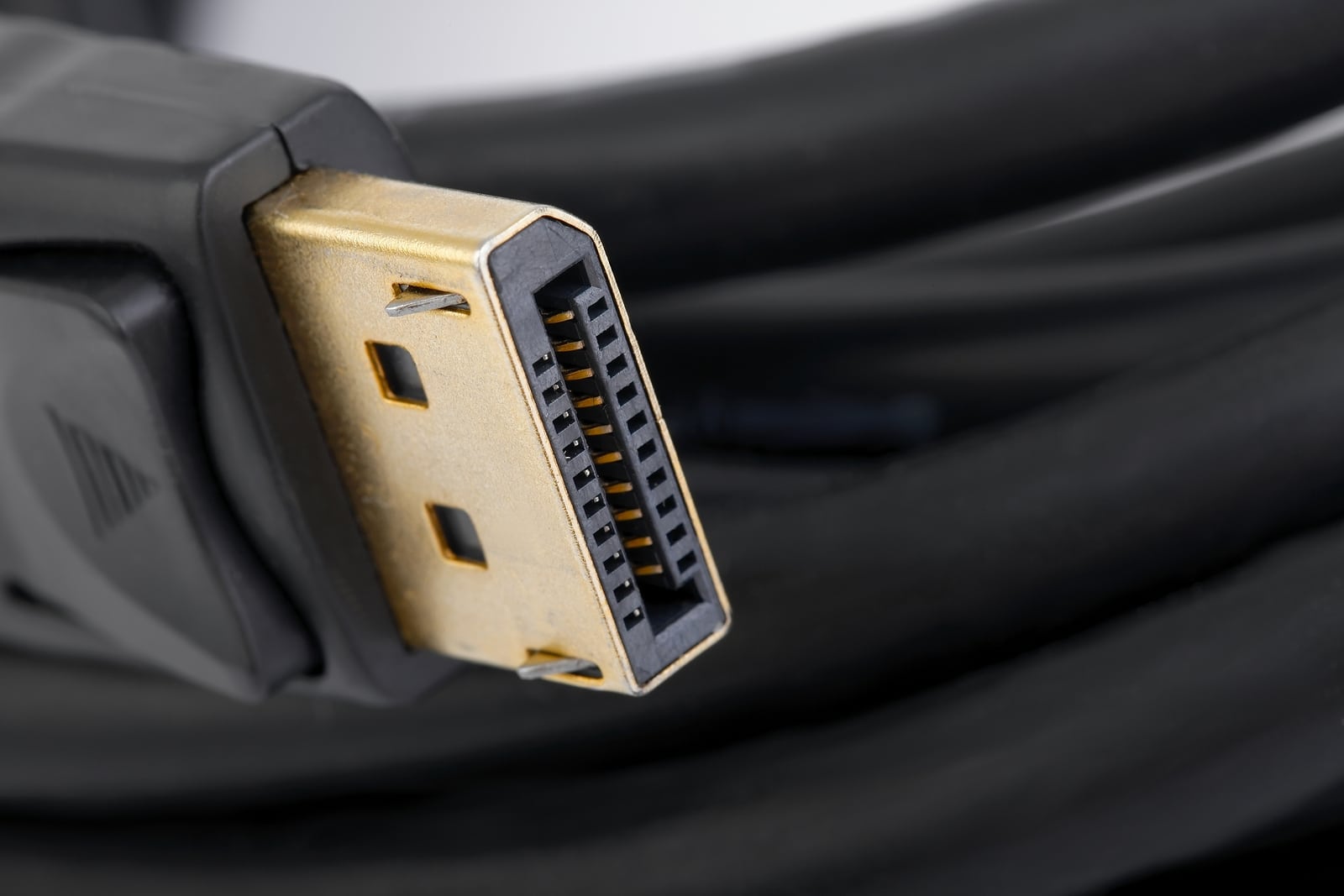
In addition to HDMI, USB-C and Thunderbolt, there is also a DisplayPort for connecting a monitor. Now VESA information about version 2.0 of the DisplayPort standard. It jumps directly from version 1.4 to 2.0, so there are a lot of features on board. The bandwidth has tripled to almost 77.37 Gbps with the introduction of Thunderbolt™ 3 Physical Interface. But what effect does this have on users?
Well, the output can now be done in 8K at 7680 x 4320 pixels at 60 Hz. Full 4:4:4 color representation and HDR10 (30 bpp) are used. VESA has also shown possible display combinations for 4 lanes.
| Resolution with one screen |
| 16K display (15360 x 8460) at 60 Hz and 30 bpp 4:4:4:4 HDR (with DSC) |
| 10K display (10240 x 4320) at 60 Hz and 24 bpp 4:4:4:4 (no compression) |
| Double screen resolution |
| two 8K displays (7680 x 4320) at 120 Hz and 30 bpp 4:4:4:4 HDR (with DSC) |
| two 4K displays (3840 x 2160) at 144 Hz and 24 bpp 4:4:4:4 (without compression) |
| Three-screen resolution |
| Three 10K displays (10240 x 4320) at 60 Hz and 30 bpp 4:4:4:4 HDR (with DSC) |
| Three 4K displays (3840 x 2160) at 90 Hz and 30 bpp 4:4:4:4 HDR (without compression) |
| Three 4K displays (3840 x 2160) at 90 Hz and 30 bpp 4:4:4:4 HDR (without compression) |
If only two lanes are possible, the following possibilities arise.
- Three 4K displays (3840 x 2160) at 144Hz and 30 bpp 4:4:4:4 HDR (with DSC)
- Two 4K x 4K displays (4096 x 4096)(for AR/VR headsets) at 120Hz and 30 bpp 4:4:4 HDR (with DSC)
- Three QHD displays (2560 x 1440) at 120Hz and 24 bpp 4:4:4:4 (no compression)
- A 8K Display (7680 x 4320) at 30Hz and 30 bpp 4:4:4:4 HDR (no compression)
All in all, DisplayPort 2.0 is a connector that brings a lot of power. The first device is expected at the end of 2020. At VESA you can get detailed information about the new version of the standard.
